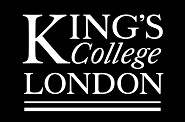Any application for funding needs to demonstrate that the proposal addresses a useful question that has not yet been answered by existing research. A clearly defined scan of the literature is a helpful way of summarising the evidence base relating to your proposed research, and justifying your request for funding, i.e. what does your trial offer that was missing from others? Indeed, this is a required part of the application process for NIHR commissioned primary research.
The RfPB funding programme guidance states that, “NIHR will only fund primary research where the proposed research is informed by a review of the existing evidence” (Appendix 4 of RfPB Guidance for Applicants, competition no. 22, June 2013). For a commissioned call, this will have been undertaken by NIHR researchers whilst preparing the commissioning brief, so applicants do not need to conduct their own review. However, applicants for researcher-led proposals will need to provide a brief overview of the literature and demonstrate how this has informed their research proposal. This will include identifying any relevant systematic reviews by checking the Cochrane Library, and Database of Abstracts of Reviews of Effects (DARE), plus searching databases such as PubMed Central for any studies published subsequently.
If there has not been a systematic review published, applicants will need to carry out an appropriate review and summarise findings. Although it would be too time consuming to conduct a thorough systematic review as part of the grant application process, a brief overview of the literature using these principles would be helpful in placing the proposed research in context.
By taking key words defining the patient group, intervention, control group and outcome (plus any differences in country-specific spelling or terminology), and applying these to electronic databases such as PubMed Central and Europe PubMed Central , you can present a more thorough overview of the available evidence than just referring to one or two high profile or particularly relevant publications in the field.
A summary of the evidence could include a statement along the lines of “we found n RCTs/observational studies that investigated x vs. y, and found z.” This is a chance to highlight gaps in the evidence base which could further your case for support.
In addition, applicants need to reference relevant on-going studies, for example using clinical trial registries such as The NIHR CRN Portfolio, to identify any projects which might overlap (or which might be considered by panel members to overlap) with the proposed research.
Andrea Takeda, RDS London, 2013




